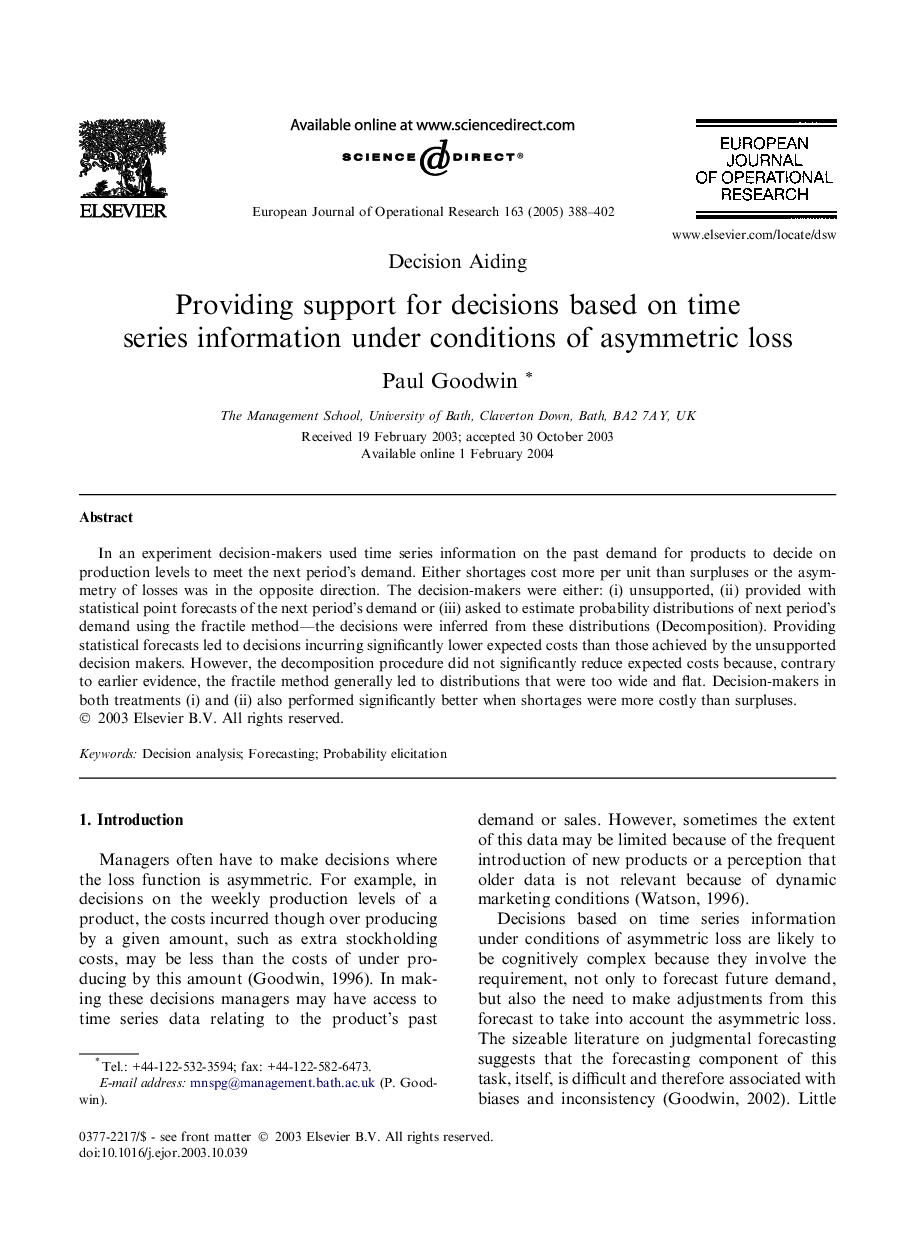| Article ID | Journal | Published Year | Pages | File Type |
|---|---|---|---|---|
| 9663878 | European Journal of Operational Research | 2005 | 15 Pages |
Abstract
In an experiment decision-makers used time series information on the past demand for products to decide on production levels to meet the next period's demand. Either shortages cost more per unit than surpluses or the asymmetry of losses was in the opposite direction. The decision-makers were either: (i) unsupported, (ii) provided with statistical point forecasts of the next period's demand or (iii) asked to estimate probability distributions of next period's demand using the fractile method--the decisions were inferred from these distributions (Decomposition). Providing statistical forecasts led to decisions incurring significantly lower expected costs than those achieved by the unsupported decision makers. However, the decomposition procedure did not significantly reduce expected costs because, contrary to earlier evidence, the fractile method generally led to distributions that were too wide and flat. Decision-makers in both treatments (i) and (ii) also performed significantly better when shortages were more costly than surpluses.
Related Topics
Physical Sciences and Engineering
Computer Science
Computer Science (General)
Authors
Paul Goodwin,
